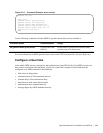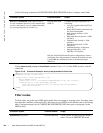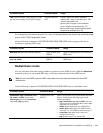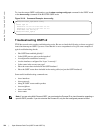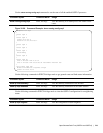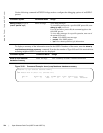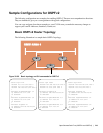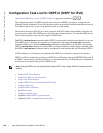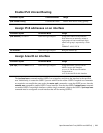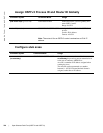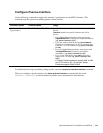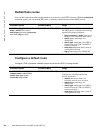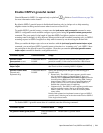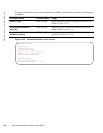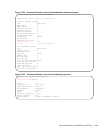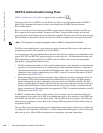
Open Shortest Path First (OSPFv2 and OSPFv3) | 727
Enable IPv6 Unicast Routing
Assign IPv6 addresses on an interface
Assign Area ID on interface
The ipv6 ospf area command enables OSPFv3 on an interface and places the interface in the specified
area. Additionally, it creates the OSPFv3 process with ID on the router. OSPFv2 required two commands
are required to accomplish the same tasks: the
router ospf command to create the OSPF process, then the
network area command to enable OSPFv2 on an interface. Note that the OSPFv2 network area command
can enable OSPFv2 on multiple interfaces with the single command, whereas the OSPFv3
ipv6 ospf area
command must be configured on each interface that will be running OSPFv3.
Command Syntax Command Mode Usage
ipv6 unicast routing
CONFIGURATION Enables IPv6 unicast routing globally.
Command Syntax Command Mode Usage
ipv6 address ipv6 address CONF-INT-type slot/port Assign IPv6 address to the interface.
IPv6 addresses are normally written as
eight groups of four hexadecimal digits,
where each group is separated by a colon
(:).
FORMAT: A:B:C::F/128
no shutdown
CONF-INT-type slot/port Bring the interface up.
Command Syntax Command Mode Usage
ipv6 ospf process-id area area-id CONF-INT-type slot/port Assign the OSPFv3 process and an
OSPFv3 area to this interface.
process-id: The Process ID number
assigned above.
area-id: the area ID for this interface.



